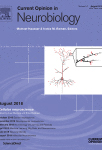Developmental genetic programs and activity-dependent mechanisms instruct neocortical area mapping.
Curr Opin Neurobiol. 2018 Jul 10;53:96-102. doi: 10.1016/j.conb.2018.06.007. [Epub ahead of print]
Simi A1, Studer M2.
Author information
1. Université Côte d’Azur (UCA), CNRS, Inserm, iBV, Institut de Biologie Valrose, 06108 Nice, France.
2. Université Côte d’Azur (UCA), CNRS, Inserm, iBV, Institut de Biologie Valrose, 06108 Nice, France. Electronic address: Michele.studer@unice.fr.
Abstract
The subdivision of the mammalian neocortex into specialized modality-specific areas is responsible for the processing of sensory information followed by an adequate motor response. This process, called arealization, depends on the graded expression of transcription factors in neocortical progenitors and postmitotic neurons prenatally, and on external activity-dependent cues driven by thalamocortical axons during postnatal stages. Thalamic inputs are guided within an intrinsically determined genetic framework to selectively target and innervate layer 4 (L4) cortical neurons in a somatotopic manner. L4 spiny stellate neurons are excitatory locally projecting neurons, which undergo a drastic dendrite remodeling during the first postnatal week and represent the principal sensory gateway to the neocortex. In this review, we will discuss the way intrinsic cortical gene regulation and extrinsic activity-dependent inputs instruct the cellular reorganization of L4 spiny stellate neurons, necessary for proper formation of the barrel cortex during the development of primary somatosensory maps.
DOI: 10.1016/j.conb.2018.06.007


